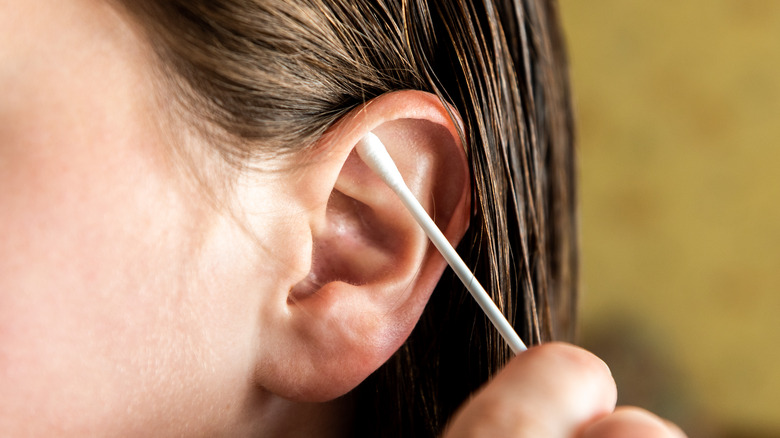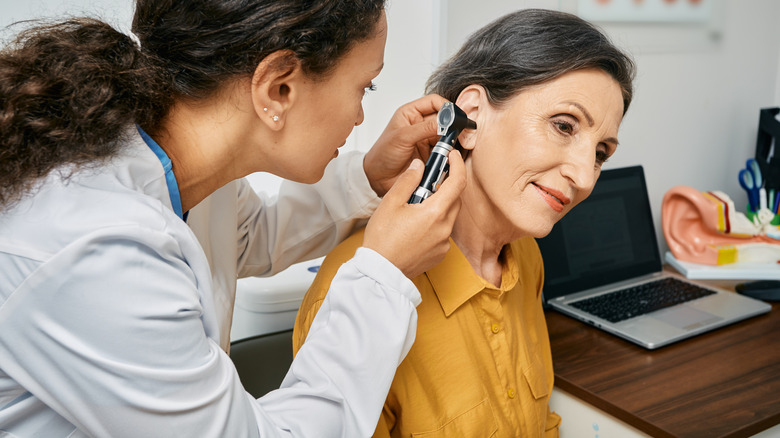What Your Ear Wax Is Telling You About Your Health
It might not be the most pleasant topic; but earwax, formally known as "cerumen," is a normal substance that our bodies produce to protect and lubricate our ear canals. The composition and appearance of earwax, which is made up of secretions from glands in the skin of the ear canal and dead skin cells, can vary significantly from person to person. Some people produce dry, flaky earwax, while others produce wet, sticky earwax. The color can range from light yellow to dark brown or black.
Here's the fascinating part: Your earwax can give you or your doctor clues about your overall health. A 2017 report published in Biochemia Medica showed that cerumen contains a variety of biomarkers that could be used to diagnose a range of diseases. So, while it may not be the most glamorous topic, paying attention to your earwax might help you stay healthier in the long run. Remember, though, using cotton swabs, bobby pins, or other small objects to clean your ears is potentially harmful.
Earwax and stress levels
Stress can affect the body in ways we wouldn't imagine, even in the production of earwax. A study published in the journal Heliyon in 2020 found that the cortisol levels in earwax correlate well with blood cortisol levels. Cortisol is a hormone commonly used to assess stress levels and diagnose certain medical conditions, such as Addison's disease and Cushing's syndrome.
According to a 2014 report in the Journal of Family Medicine and Primary Care, excessive earwax production can happen due to anxiety, fear, stress, and aging. This means that our ears could be telling us more about our mental state than we ever thought possible and that checking our earwax could help us monitor our stress levels over time in a non-invasive way. While this research is still in its early stages, it emphasizes the importance of recognizing that our bodies respond to stress in diverse ways, including within the ear canal. Understanding the connection between stress and earwax could be an aid to comprehensive health management.
Earwax and cancer diagnosis
According to a 2019 study published in Scientific Reports, an array of biomarkers in earwax can be used to identify cancer with remarkable accuracy. The best part is that this new diagnostic tool, called a "cerumenogram," is non-invasive, affordable, and can be easily conducted in a doctor's office without any discomfort. In fact, the cerumenogram accurately diagnosed cancer in 95% of cases tested.
The level of accuracy achieved in cancer diagnosis through cerumenogram is a significant breakthrough. This method could reduce the need for invasive and uncomfortable procedures, which makes it an excellent alternative for healthcare professionals and patients. The biomarkers found in cerumen are produced by cancer cells or the body as a response to cancer. This discovery offers a non-invasive way of detecting cancer early, making it easier and more accessible. This innovative approach has the potential to play a crucial role in the fight against cancer, making early diagnosis more accessible than ever before.
Earwax as a window to glucose levels
Taking care of your glucose levels is essential, as fluctuations can be early indicators of conditions like diabetes. The traditional way of measuring glucose levels involves invasive blood samples. However, in a study published in Diagnostics in 2020, researchers introduced a non-invasive method of tracking acute and chronic glucose levels using earwax. The glucose levels in the earwax samples closely matched the participants' blood glucose levels, indicating that earwax sampling could be a reliable and practical method for measuring glucose levels. This has the potential for numerous applications, including monitoring blood sugar levels in people with diabetes, screening for diabetes, and assessing the effectiveness of diabetes treatment.
One of the best things about this method is its non-invasive nature, which means you can collect earwax samples at home and send them to a laboratory for analysis. However, this method is still relatively new, and more research is needed to validate its reliability and determine the best way to use it in clinical practice.
Other health indicators in earwax
Earwax is an interesting substance that can provide valuable insights into your overall well-being. Research published in 2017 in the journal Otolaryngology–Head and Neck Surgery highlights the importance of examining earwax characteristics, as changes may indicate ongoing or past infections. Dietary habits can also influence your earwax. For example, foods including gluten, dairy, caffeine, or lots of sugar could lead to a higher cerumen buildup (per Ask an Audiologist). Paying attention to your diet's impact on your earwax may offer an early warning sign of dietary concerns or imbalances.
Checking your earwax regularly for unusual changes, odors, or discomfort can be an early warning system for various health concerns. However, it's essential to remember that earwax should not be the sole diagnostic tool. When in doubt or if you notice significant changes in your earwax, it's always a good idea to consult a healthcare professional for a comprehensive evaluation and appropriate guidance for your next steps.





